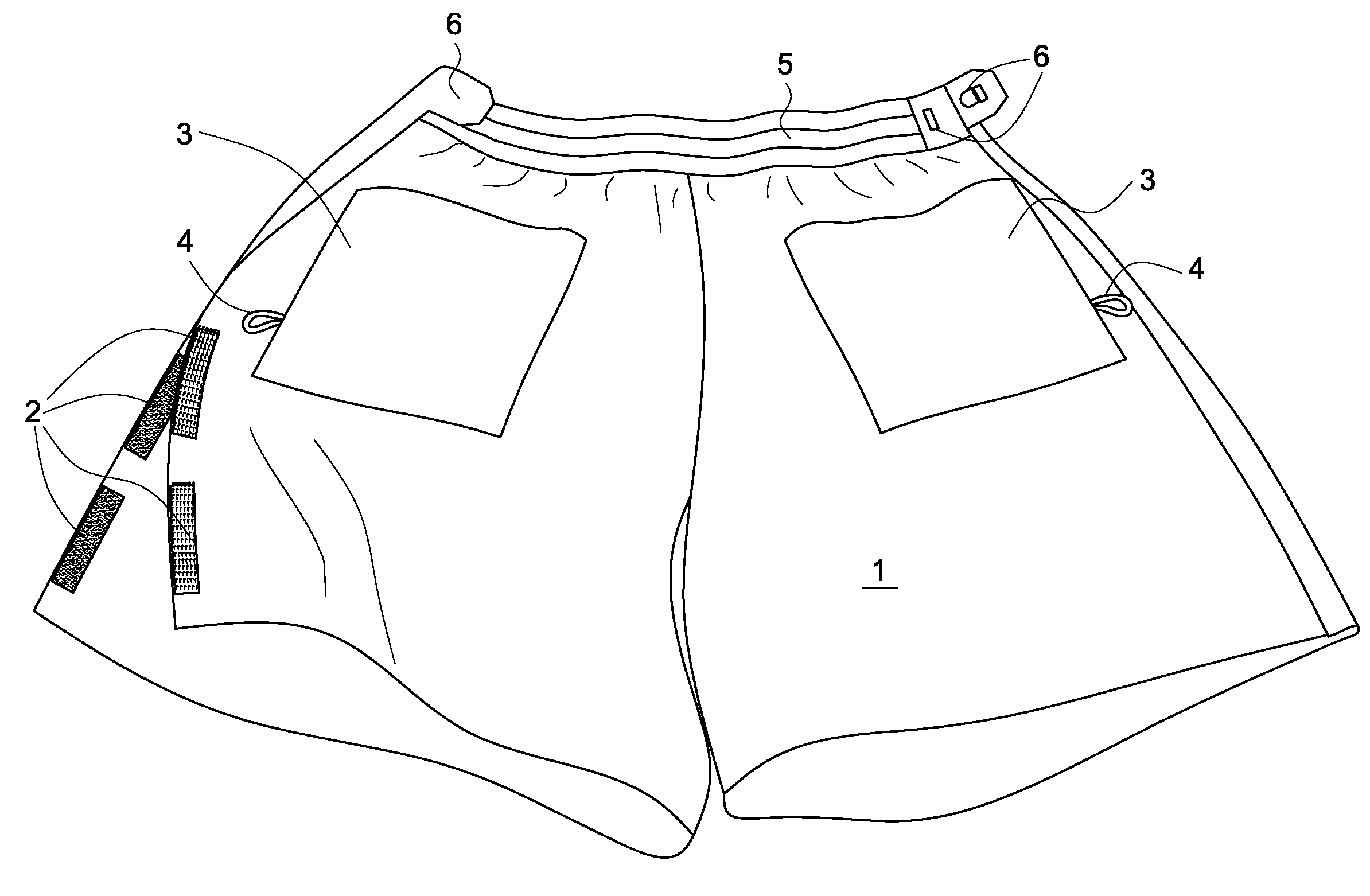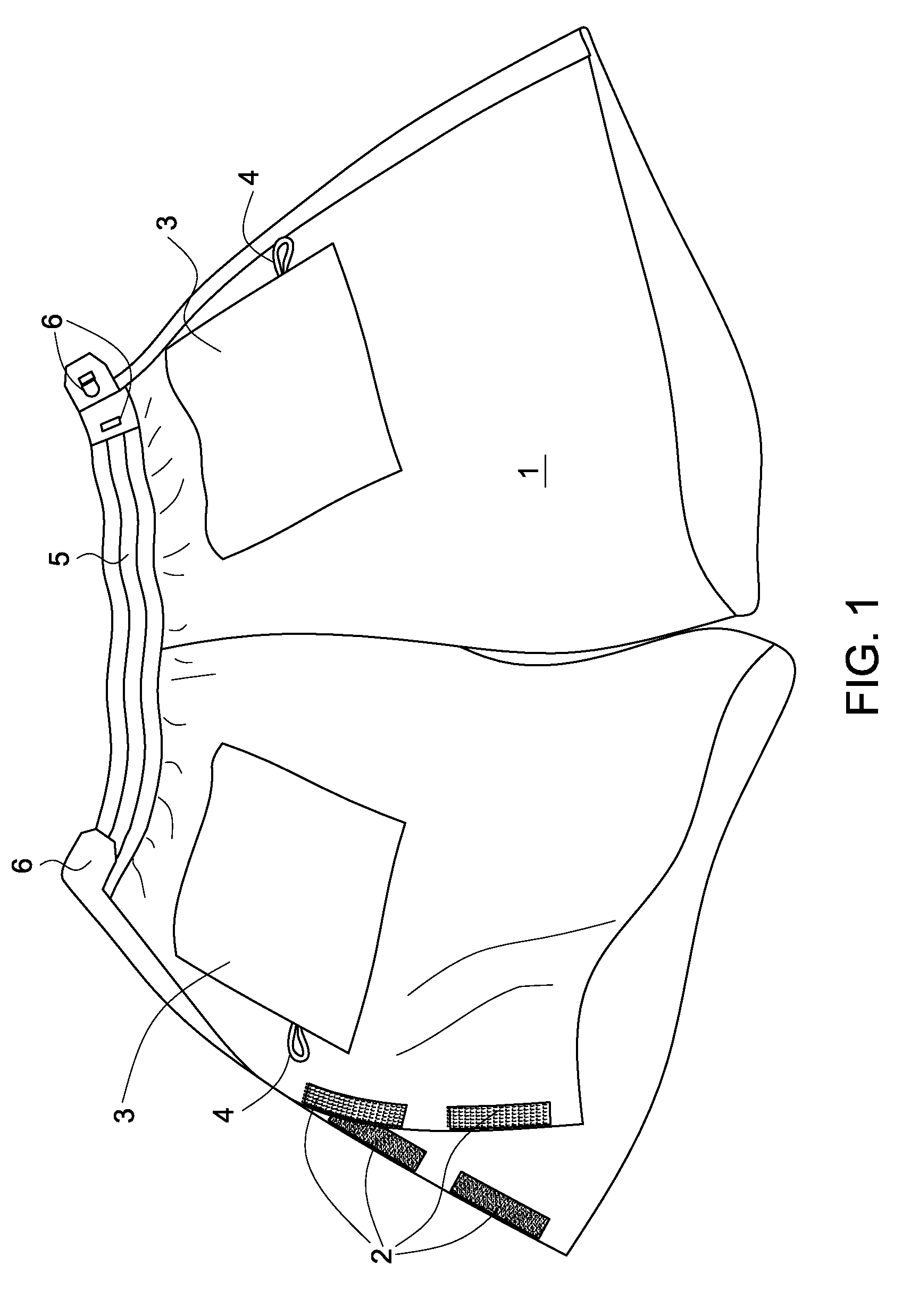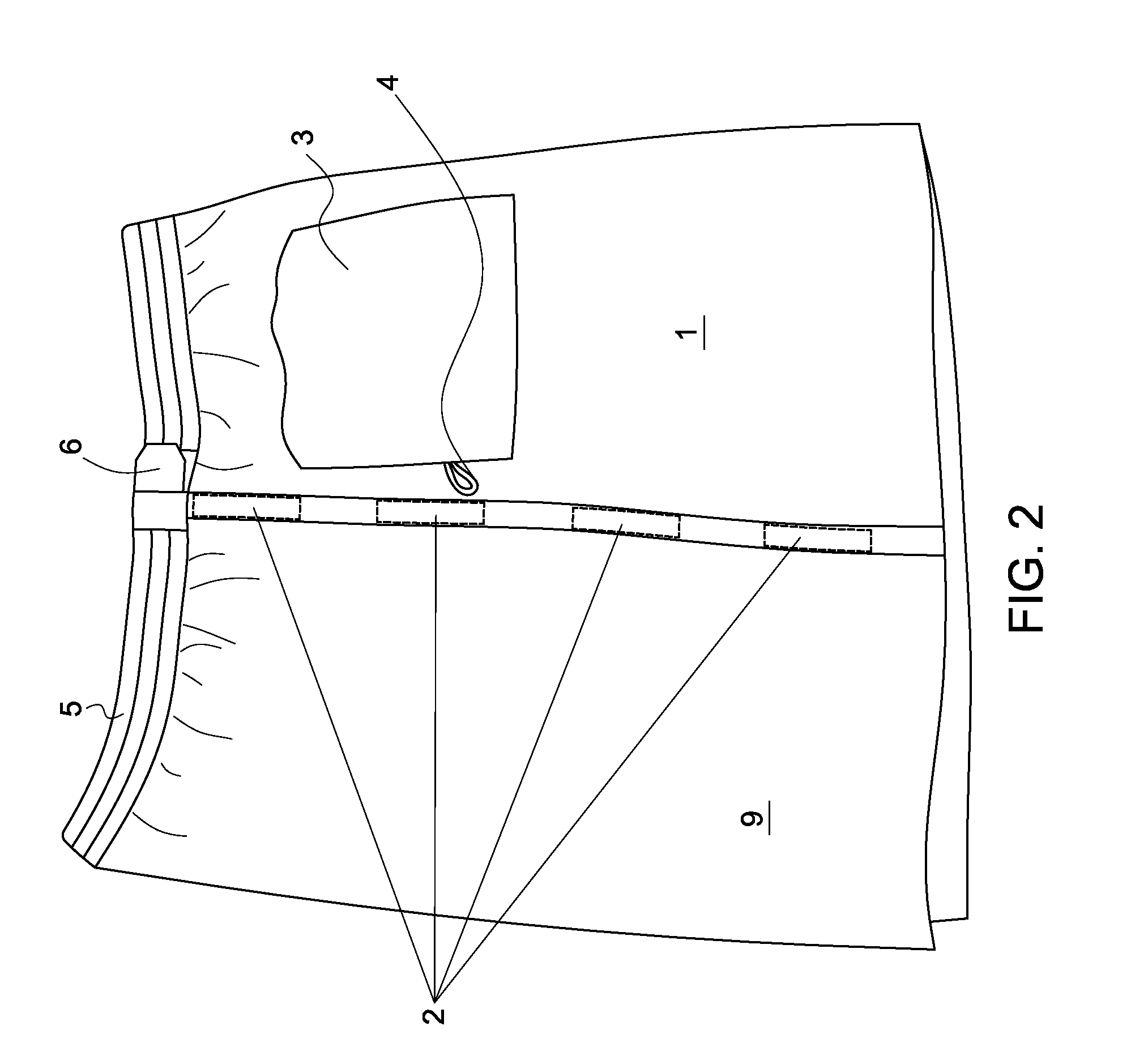Right-and-left-seam opening medical-patient shorts and methods of use
a technology of right and left seams and shorts, applied in the direction of sewing apparatus, protective garments, textiles and paper, etc., can solve the problems of unsuitable patient wear, minimal modesty coverage, and clothing removal without disturbing such connected medical devices
- Summary
- Abstract
- Description
- Claims
- Application Information
AI Technical Summary
Problems solved by technology
Method used
Image
Examples
first embodiment
A Pair of Shorts for Medical Patients or Athletes
[0026]This embodiment is directed generally to a pair of shorts that are designed to be easily removable and donnable without having to maneuver the shorts over the user's legs and feet.
[0027]Refer to FIGS. 1-4. In an embodiment, the shorts have a front fabric panel 1, wherein the front fabric panel 1 has a top and bottom edge, and wherein the front fabric panel 1 has an outer-right-seam edge and an outer-left-seam edge. Further, the front fabric panel 1 has a waistband segment 5 along its top edge, which can be elastic. In addition, the shorts have a rear fabric panel 9, wherein the rear fabric panel 9 has a top and bottom edge, and wherein the rear fabric panel 9 has an outer-right-seam edge and an outer-left-seam edge. Further, the rear fabric panel 9 has a waistband segment 5 along its top edge to mate on the ends with that of the front fabric panel's 1 waistband segment 5, and the rear waistband segment can be elastic. The two fa...
second embodiment
A Method of Making a Pair of Shorts
[0037]This embodiment encompasses a method of making a pair of shorts for medical patients or athletes. Refer to FIGS. 1-4.
[0038]The method comprises the steps of: providing a front fabric panel 1, wherein the front fabric panel 1 has a top and bottom edge, wherein the front fabric panel 1 has an outer-right-seam edge and an outer-left-seam edge, the right and left orientations associated with the perspective of a user wearing the pair of shorts, and wherein the front fabric panel 1 has a waistband segment 5 along its top edge; providing a rear fabric panel 9, wherein the rear fabric panel 9 has a top and bottom edge, wherein the rear fabric panel 9 has an outer-right-seam edge and an outer-left-seam edge, the right and left orientations associated with the perspective of a user wearing the pair of shorts, wherein the rear fabric panel 9 has a waistband segment 5 along its top edge, and wherein the two waistband segments 5 for the front and rear fa...
third embodiment
A Method of Using a Pair of Shorts
[0045]This embodiment encompasses a method of using a pair of shorts designed for medical patients or athletes, as described in the First Embodiment supra. Refer to FIGS. 1-4.
[0046]The method comprises the steps, performed by either the patient or a medical-care provider on behalf of the patient, of: ensuring that both the left and right outer seams of the pair of shorts are uncoupled 2, 6; placing the crotch region 7 of the pair of shorts between the patient's legs, wherein the rear fabric panel 9 is positioned to cover the patient's posterior / buttock region, and wherein the front fabric panel 1 is positioned to cover the patient's anterior / groin region; engaging each of the waistband 5 coupling devices 6, thus forming a continuous and functional waistband 5; and coupling at least one of the plurality of hook-and-pile mated patches 2 on each of the outer-right and outer-left seams.
[0047]This embodiment can be further extended wherein the pair of sh...
PUM
 Login to View More
Login to View More Abstract
Description
Claims
Application Information
 Login to View More
Login to View More - R&D
- Intellectual Property
- Life Sciences
- Materials
- Tech Scout
- Unparalleled Data Quality
- Higher Quality Content
- 60% Fewer Hallucinations
Browse by: Latest US Patents, China's latest patents, Technical Efficacy Thesaurus, Application Domain, Technology Topic, Popular Technical Reports.
© 2025 PatSnap. All rights reserved.Legal|Privacy policy|Modern Slavery Act Transparency Statement|Sitemap|About US| Contact US: help@patsnap.com



